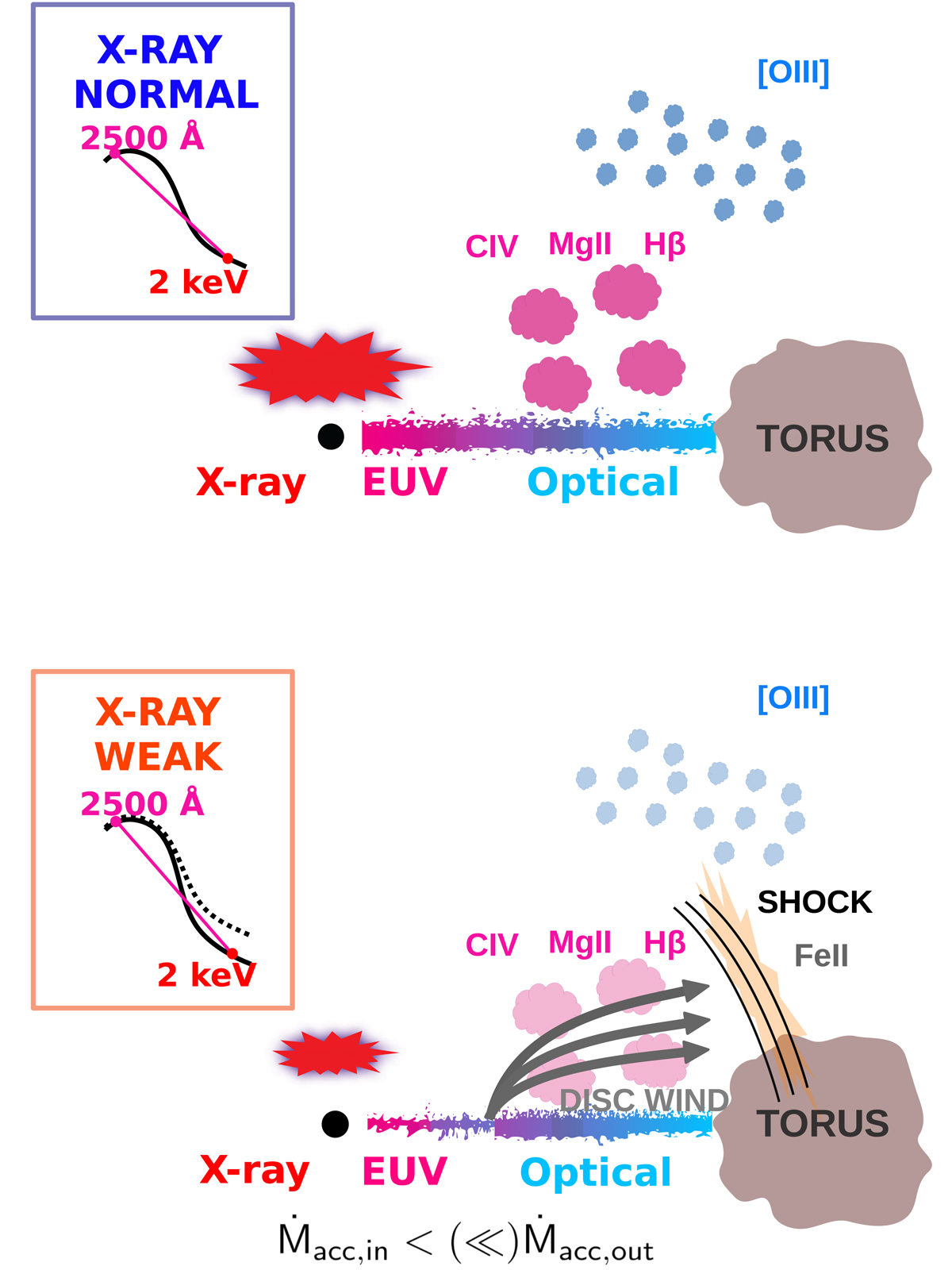Fig. 13.

Download original image
Sketch of the observational features of X-ray normal (top) and weak (bottom) quasars. In the weak case a powerful wind affects the X-ray coronal emission. The outflowing phase depletes the UV-radiating inner disc, and the Comptonisation process falls short of seed radiation. The resulting X-ray flux is thus reduced without the need for absorption. Shocks at the interface between the disc wind and the BLR gas can enhance the Fe II/Mg II ratio in X-ray weak sources. The observer is assumed to be on top, but a rather wide range of viewing angles remains compatible with the type I nature of these sources. Since our line of sight is not expected to be significantly inclined with respect to the disc axis, as suggested by the very high bolometric luminosity of the sample and confirmed by the low EW [O III], outflow footprints like absorption dips or strong blue wings in C IV could be hidden. On larger scales, the [O III] luminosity mimics the X-ray behaviour, being lower in the X-ray weak sample, but fully consistent with the high-luminosity extrapolation of the L[O III]–LX relation. The weaker line emission in X-ray weak sources, here depicted by more tenuous colours, is associated with the difference in the SED shape, as systematic differences between the BLR/NLR in X-ray weak and normal sources are not expected. This a mechanism is more likely to be found in highly accreting sources, where conditions are conducive to the launch of powerful winds, and hence the enhanced X-ray weak fraction in high λEdd objects.
Current usage metrics show cumulative count of Article Views (full-text article views including HTML views, PDF and ePub downloads, according to the available data) and Abstracts Views on Vision4Press platform.
Data correspond to usage on the plateform after 2015. The current usage metrics is available 48-96 hours after online publication and is updated daily on week days.
Initial download of the metrics may take a while.


